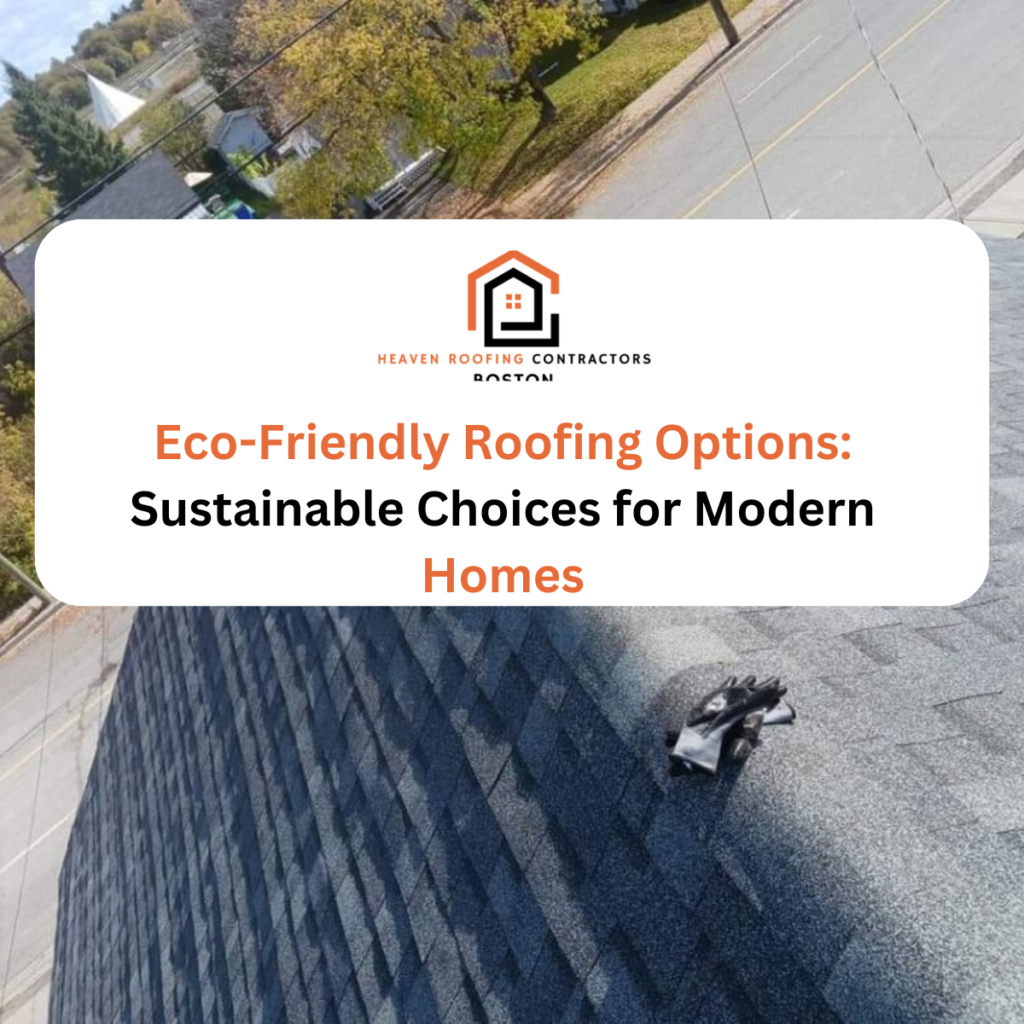In today’s environmentally conscious world, homeowners are increasingly seeking out sustainable and eco-friendly solutions for their homes. One critical aspect of home sustainability is roofing. This article explores various eco-friendly roofing options, their benefits, and considerations, including roof replacement costs and how these choices contribute to a more sustainable future.
What is Eco-Friendly Roofing?
Eco-friendly roofing refers to materials and systems designed to minimize environmental impact throughout their lifecycle—from production and installation to disposal. These roofing solutions aim to reduce energy consumption, lower carbon footprints, and promote the use of sustainable and recycled materials.
Benefits of Eco-Friendly Roofing
Eco-friendly roofing offers several advantages:
- Energy Efficiency: Many sustainable roofing materials, such as cool roofs and green roofs, can help regulate indoor temperatures, reducing the need for air conditioning and potentially lowering energy bills.
- Reduced Environmental Impact: By using materials made from recycled content or those that are recyclable, eco-friendly roofs help reduce the strain on natural resources and minimize waste.
- Durability and Longevity: Many eco-friendly roofing options are designed to last longer than traditional materials, which can lead to fewer replacements and repairs over time.
Types of Eco-Friendly Roofing Options
1. Metal Roofing
Metal roofs are a popular choice for those seeking an eco-friendly roofing material. Made from recycled materials, metal roofs are highly durable and can last up to 50 years. They also reflect sunlight, which helps in reducing heat absorption and lowering cooling costs.
Advantages of Metal Roofing:
- Recycled Content: Often made from recycled metal, metal roofing is a sustainable choice.
- Energy Efficiency: Reflective properties help in maintaining cooler indoor temperatures.
- Longevity: Metal roofs typically last longer than traditional roofing materials.
2. Green Roofs
Green roofs, also known as living roofs, involve growing vegetation on a rooftop. They provide excellent insulation, absorb rainwater, and reduce the urban heat island effect.
Benefits of Green Roofs:
- Improved Insulation: Vegetation helps in insulating the building, reducing the need for heating and cooling.
- Stormwater Management: Absorbs rainwater, reducing runoff and easing the burden on stormwater systems.
- Biodiversity: Provides habitat for birds and insects.
3. Clay and Slate Tiles
Clay and slate tiles are traditional roofing materials that are naturally durable and can be sourced sustainably. These materials are long-lasting and often come from renewable sources.
Features of Clay and Slate Tiles:
- Longevity: Both materials have a long lifespan, often exceeding 50 years.
- Sustainability: Clay and slate are natural products with minimal processing.
4. Cool Roofs
Cool roofs are designed to reflect more sunlight and absorb less heat than standard roofs. They are often made from reflective materials or coatings.
Advantages of Cool Roofs:
- Heat Reflection: Reduces the amount of heat absorbed by the building.
- Energy Savings: Can lower air conditioning costs by maintaining a cooler indoor temperature.
- Environmental Impact: Helps mitigate the urban heat island effect.
5. Recycled Shingles
Recycled shingles are made from reclaimed materials, such as rubber or plastic, and can offer a sustainable alternative to traditional asphalt shingles.
Benefits of Recycled Shingles:
- Sustainability: Made from recycled materials, reducing waste and demand for new raw materials.
- Durability: Often designed to be more resilient and longer-lasting than standard shingles.
Considerations for Eco-Friendly Roofing
Roof Replacement Costs
One key factor to consider when opting for eco-friendly roofing is the roof replacement cost. While many sustainable roofing options can lead to long-term savings through energy efficiency and durability, the initial investment might be higher compared to traditional materials. However, the benefits, including lower energy bills and reduced environmental impact, often outweigh the upfront costs.
Maintenance and Longevity
When choosing an eco-friendly roofing material, it’s essential to consider the maintenance requirements and expected lifespan. Some materials may require more upkeep but offer greater benefits in terms of energy efficiency and environmental impact.
Local Climate and Conditions
Different roofing materials perform better in specific climates. For example, green roofs may be more suitable for regions with adequate rainfall, while metal roofs are ideal for areas with high temperatures and heavy rainfall.
Conclusion
Opting for eco-friendly roofing options is a step towards a more sustainable future. From metal roofs and green roofs to clay tiles and cool roofs, there are various choices available that can enhance your home’s energy efficiency and reduce its environmental impact. While roof replacement costs may vary, the long-term benefits of reduced energy consumption, lower carbon footprints, and sustainable practices make these options worthwhile. By choosing the right eco-friendly roofing material for your home, you contribute to a greener, more sustainable planet.



